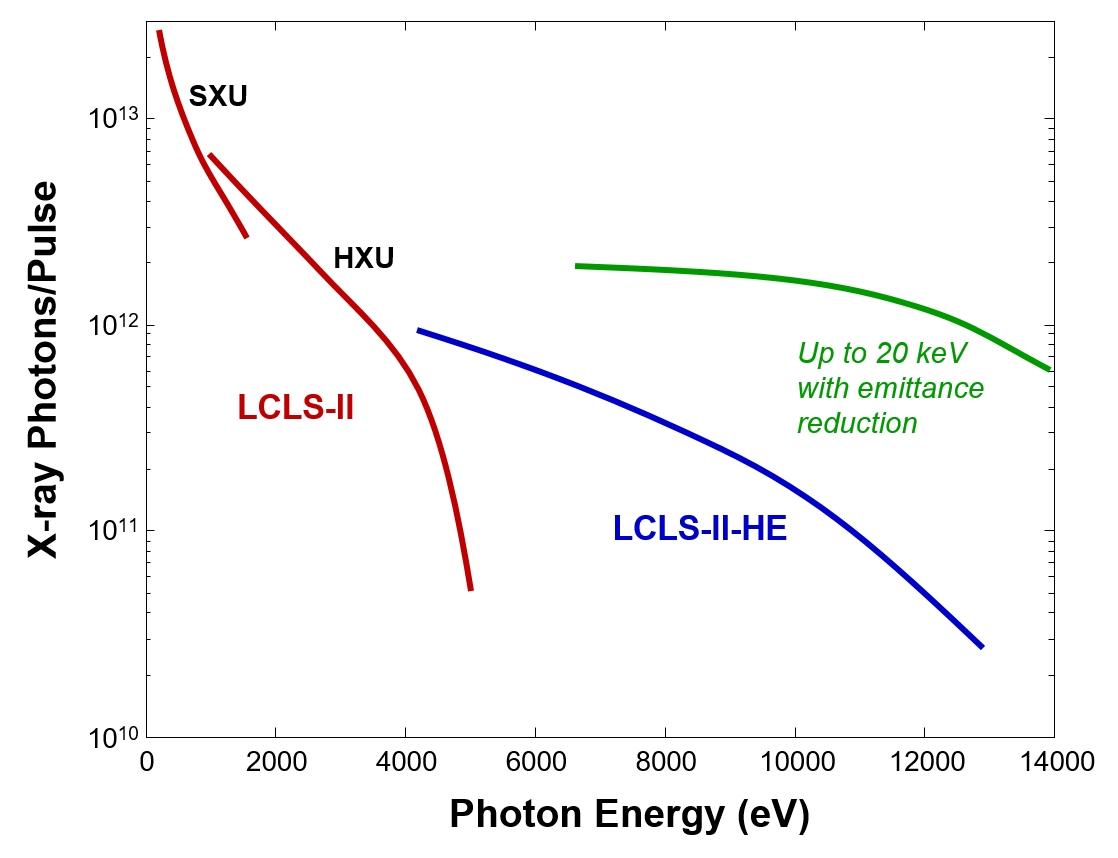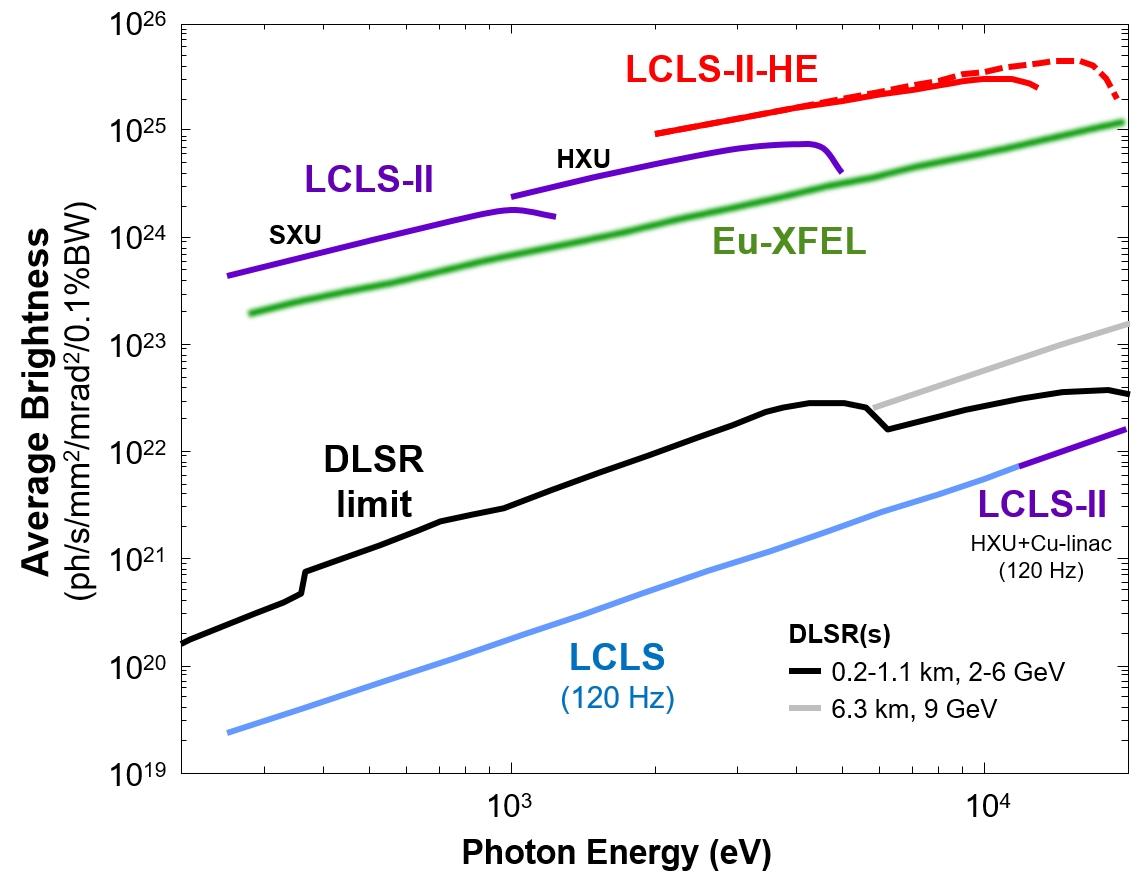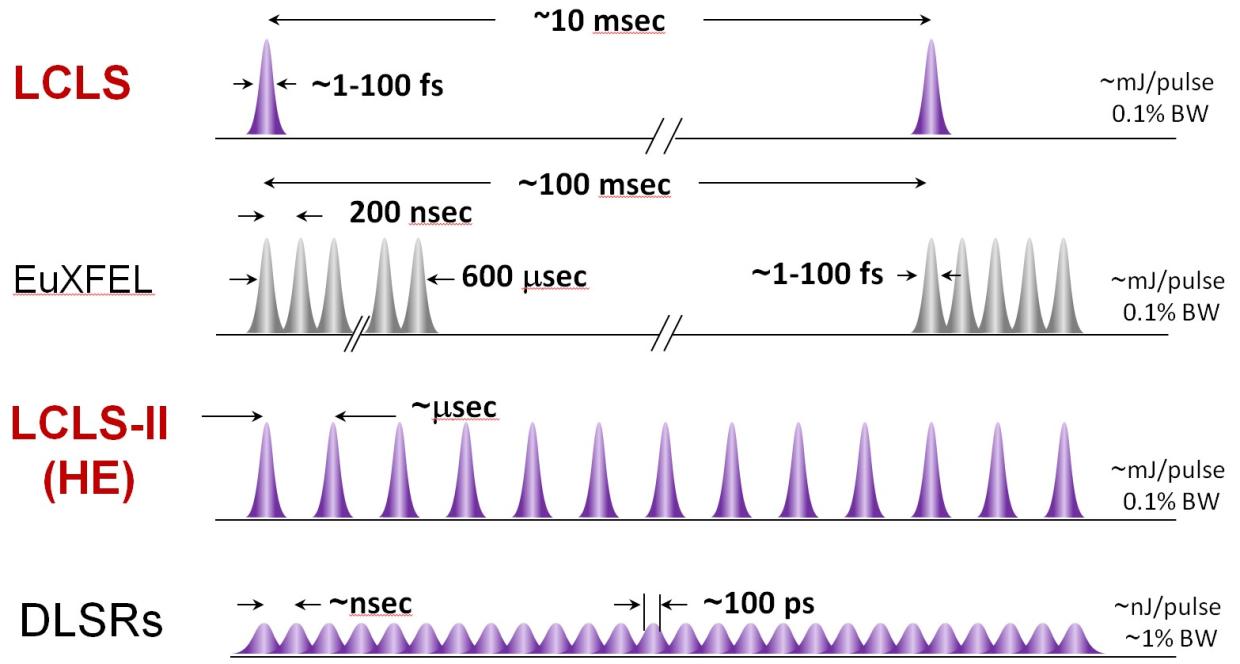LCLS-II-HE Design and Performance
LCLS-II will be the first XFEL to be based on continuous-wave superconducting accelerator technology (CW-SCRF). The linac energy of 4 GeV will drive two tunable-gap undulators (SXU, HXU), LCLS-II will generate soft X-ray pulses from 0.25 to 5 keV (2.5 Å) at repetition rates up to 1 MHz. The energy upgrade (LCLS-II-HE) will take advantage of infrastructure already being installed as part of the ongoing LCLS-II construction project.

LCLS-II is based on new accelerator cryomodules to be installed in the first 750 m of the 3 km SLAC linac tunnel (L1, L2, L3). By adding additional cryomodules in the final 250 m of the refurbished tunnel (L4), LCLS-II-HE will double the electron beam energy to 8 GeV and thus increase the spectral reach of the hard X-ray undulator (HXU) to more than 12 keV at repetition rates up to 1 MHz. Anticipated improvements in electron beam emittance will extend the energy reach of LCLS-II-HE to 20 keV at high repetition rates. At the same time, the existing Cu-linac and new tunable-gap hard X-ray undulator (HXU) will provide photon energies up to 25 keV, and multi-mJ pulses from the soft X-ray undulator (SXU) at 120 Hz. Both accelerators (Cu-linac and CW-SCRF) can operate simultaneously, driving either SXU, or HXU, or both simultaneously (e.g. by time-multiplexing pulses from a single linac).
LCLS-II-HE will:
- Deliver two to three orders of magnitude increase in average spectral brightness beyond any proposed or envisioned diffraction-limited storage ring (DLSR).
- Provide temporal coherence for high-resolution spectroscopy near the Fourier transform limit with more than 300-fold increase in average spectral flux (ph/s/meV) beyond any proposed or envisioned DLSR.
- Generate ultrafast hard X-ray pulses in a uniform (or programmable) time structure at a repetition rate of up to 1 MHz – a qualitative advance beyond the burst-mode nature of the European-XFEL, and a 100,000-fold improvement in temporal resolution compared to storage ring sources.
The X-ray performance of LCLS-II-HE in photons/pulse and average brightness are shown below:
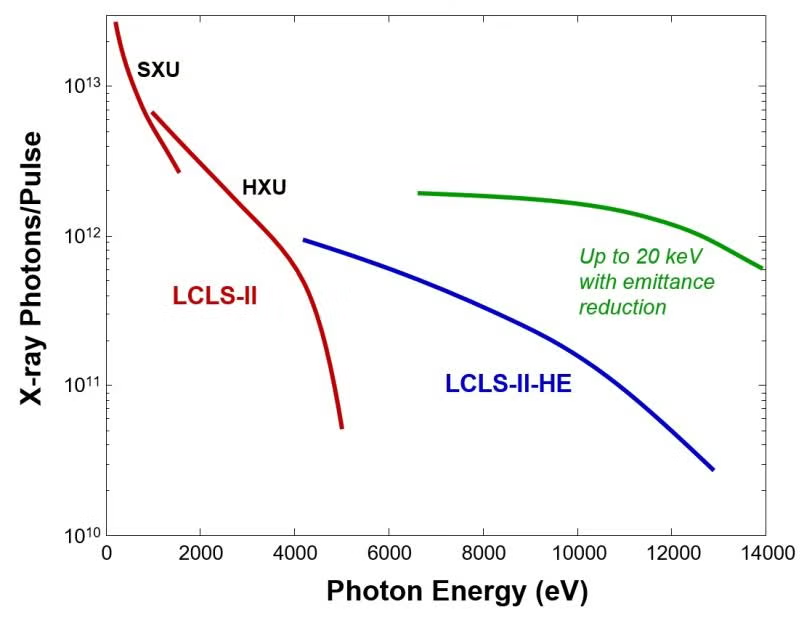
HEDesignFig2.jpg
Calculated photons per pulse for high-repetition-rate operation from LCLS-II soft X-ray (SXU) and hard X-ray undulator (HXU) at 4 GeV, and proposed LCLS-II-HE (8 GeV). Projected high-energy performance is bounded by the blue and green lines, dependent on electron beam emittance (with the resultant highest photon energy being between 12.8 and 20 keV). Note that ph/pulse is constant with repetition rate up to ~300 kHz, and scales inversely with repetition rate above ~300 kHz.
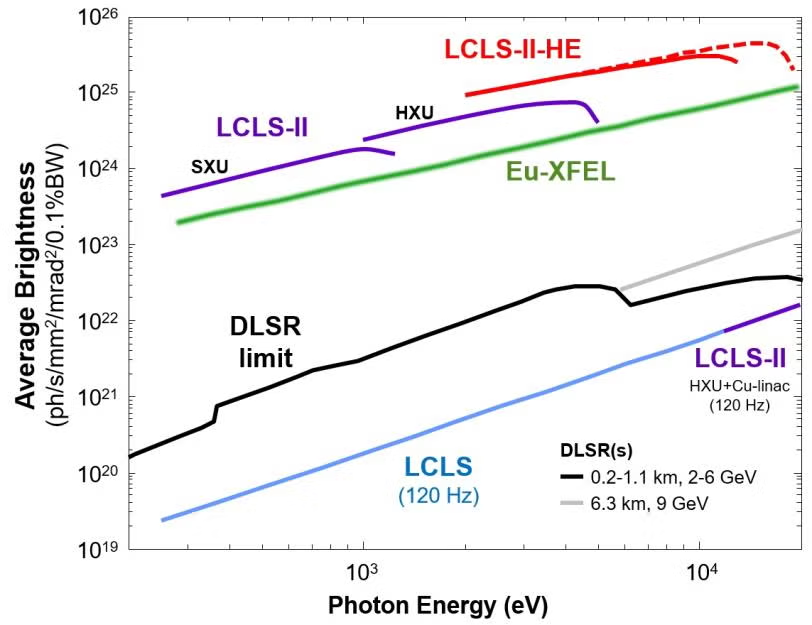
HEDesignFig3.jpg
Average spectral brightness of current, planned, and potential future X-ray science facilities including diffraction-limited storage rings (DLSRs), and the EuXFEL. LCLS-II provides ~10,000-fold increase in average brightness in the soft/tender X-ray range and LCLS-II-HE provides ~1,000-fold increase (in the fundamental) to >12.8 keV, with a potential reach to ~20 keV (assuming improved e-beam emittance, indicated by the dashed line). All XFEL curves assume SASE operation. Self-seeding will increase the average brightness of XFELs by an additional factor of 20 to 50.
DLSR contributions from M. Borland (APS) and C. Steier (ALS)
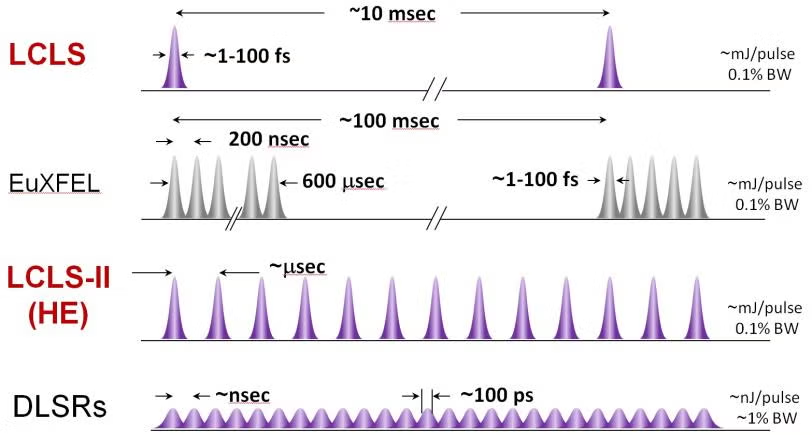
lcls-ii-he-dp-4.jpg
Pulse structure from the LCLS warm Cu-linac at 120 Hz, burst-mode structure from the pulsed SCRF linac of the EuXFEL at 5 MHz/10Hz, and the uniform (programmable) bunch structure from the CW-SCRF linac of LCLS-II and LCLS-II-HE.
Further details are available in the report:
Linac Coherent Light Source II High Energy Upgrade (LCLS-II-HE) Conceptual Design Report (SLAC-R-1098 )
